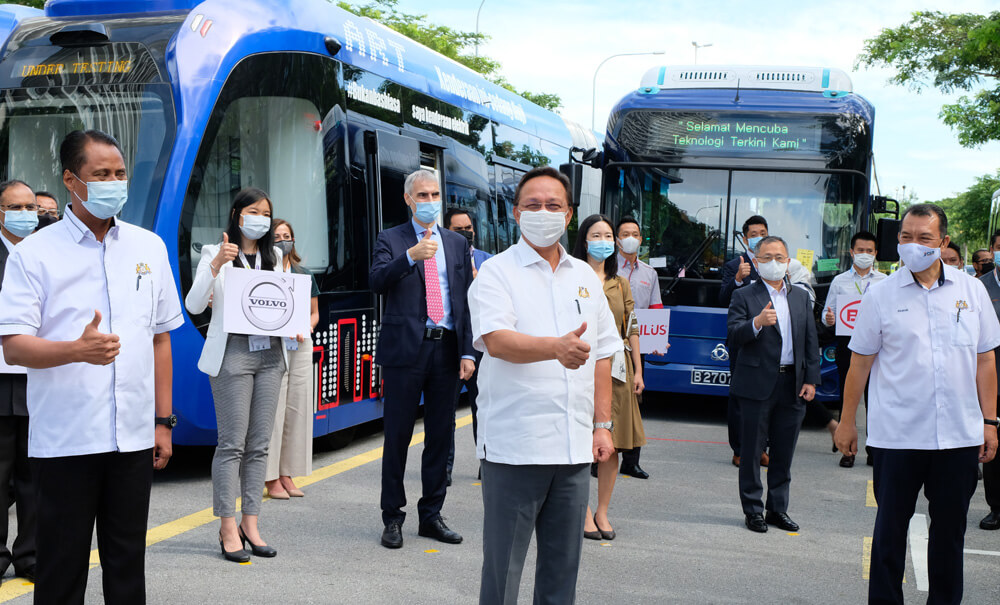Technology
Autonomous Rapid Transit (ART) System allows for high passenger capacity and a lower cost of implementation; and operates on clean sources of energy like electricity or hydrogen.
What is ART


ART is a trackless system that uses leading edge technology developed by China’s CRRC Group, the world’s largest manufacturer of rolling stock and rail related products and systems. ART allows for higher passenger capacity (nearly 300 passengers with 3 carriages and is expandable to approximately 500 passengers with a 5-carriage configuration) at a lower cost of implementation, compared to traditional light-rail systems; and it operates on clean sources of energy such as electricity or hydrogen. The multi-carriages are equipped with sensors that read the virtual tracks on the road, enabling it to automatically navigate its own route, without the need for expensive physical rail tracks. The ART travels up to 70 kilometres per hour.
The ART technology is all about improving mobility of people in cities and the suburban areas, where connectivity is often hampered by the urban sprawl. Owing to its cost efficiency and adaptability, the ART system is particularly effective as a back-bone urban transit solution for cities. ART also works well as a secondary urban transit system supporting light-rail or mass transit systems, providing last mile connectivity in suburban areas or busy city centres. Thus, the ART is poised to transform the public transportation system in Malaysia, when successfully implemented.
Hydrogen Powered ART Vehicle
The Hydrogen-powered vehicle (“H2V”) is an evolution of Autonomous Rapid Transit (“ART”), the world’s first low- to medium-capacity trackless rail transit system.
Created by CRRC Zhuzhou Institute Co., Ltd. upon independent research and development for 7 years.
First-class rail transit technology, retains the advantages of rail transit and breaks the application limitations as a rail transit system that highly meets the needs of urban public transport.
In June 2017, electric-powered ART was officially launched to the world.
For KUTS, the H2V proposed is built on the latest Generation 2.0 of ART powered by onboard Hydrogen Energy System.
POC of ART for KUTS
GOAL
To demonstrate the functionality and performance of the H2V, primarily in the application of hydrogen power systems, as well as to verify the concept of the H2V for the Kuching Urban Transport System (KUTS) Project.
OBJECTIVES
- To demonstrate the capability and performance of the Hydrogen Fuel Cell propulsion system of the H2V.
- To demonstrate the capability and performance of the Vehicle Guidance System.
- To demonstrate the refueling process of the H2V.
- To demonstrate the H2V’s operation to project stakeholders, including local communities and focus groups, and obtain feedback.
- To identify preliminary problems, challenges, and technical gaps in operating the H2V.
- To collect technical data to be incorporated into H2V and infrastructure design.
